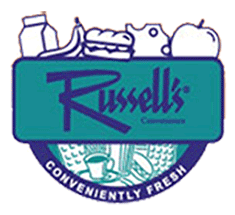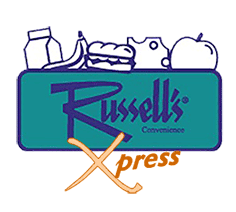How Meat Snacks Are Evolving
By Howard Riell, Associate Editor
New flavors, healthier options and combination packs have created a marketing force that promises to drive meat snacks sales even higher in 2016.With more emphasis on home delivery, the category seems well positioned to garner incremental sales gains for convenience stores through online ordering and delivery.The evolving eating habits of U.S. consumers are also giving the category a boost. More Americans—including younger demographics—are snacking instead of consuming regular meals.
For the 52-week period ending Nov. 1, 2015, Chicago-based IRI’s Infoscan review shows convenience store sales of dried meat snacks at just over $1.5 billion, up 12.12%. All other dried meat snacks reached nearly $835 million. Sales of jerky reached nearly $685 million, up 9.67%. Leading meat snack brands continue to include Slim Jim, Jack Link’s, Old Trapper, Oh Boy Oberto, Tillamook Country Smoker, Frito Lay, Old Wisconsin and other brands.
For consumers on the go, savory meat snacks, which offer a variety of flavors, continue to satisfy the convenience palate.
FLAVORFUL OPTIONS
“Customers are just enjoying all the flavor options now,” said Tony Bonnell, director of retail for Feather Petroleum Co., which operates 16 Stop N Save Stores in Colorado. “Jack Link’s, and in our stores Old Santa Fe are the top-selling brands. The Old Santa Fe is the super-dry jerky, and customers seem to love it. We do have several stores in resort markets that are carrying wild game jerky, and it has done really well.”
In order to grow the category, Bonnell recommended that convenience store operators expand their offerings. However, merchandising at the Grand Junction, Colo.-based c-store required some homework.
“I haven’t had much luck with spinner racks, but going from four-foot by eight-foot jerky sets have helped sales greatly,” Bonnell said. Cross-promoting has also helped spark sales in Stop N Save locations, he added. “The best combo item for us has been fountain drinks.”
Still, another Colorado convenience chain sees variety as the key.
“I think they are so popular because of the bold flavor combinations, not the usual peppered or teriyaki,” said Vicki Jackson, marketing manager for HJB Convenience Corp. in Lakewood, Colo. Also popular with customers is “a softer-chew jerky, with no preservatives or MSG.” Top brands in her stores include Krave and Country Archer.
As HJB surveys the category with an eye on trends, Jackson said the c-store is finding more meat entries and options in the category that are enticing to patrons, including turkey, pork, chicken. “They have been a much easier chew, with bold flavor profiles.”
To generate new business, Jackson suggested that convenience store retailers follow supermarkets’ example and let consumers try the products.
“I think sampling is always good. Consumers can taste the difference,” Jackson said. “You could possibly have people that normally don’t pick up a bag of jerky because of what they remember from eating before—tough, hard chew. Get them to try it. Inform the consumer of the evolving changes, taste, texture and quality of meat.”
Shifting to North Carolina, meat snack shoppers seemingly want healthier options.
“Health is a huge thing going on right now,” Maggie Seeds, who heads up Durham, N.C.-based Clarkston Consulting’s food group, pointed out. “There has been a lot of merger and acquisition activity among some of the big brands that traditionally relied on maybe, not the healthiest categories of foods. Now the consumer is demanding healthy, organic, gluten-free options, and so these companies are trying to make sure they respond and either acquire or bring in-house operations to be able to handle creating healthier alternatives.”
There has also been a major push for protein, especially within the meat snack category, Seeds said.
“Everybody is saying, ‘OK, we want a healthy option here. Let’s talk about the protein content,’” Seeds said. “Everyone is very interested in having a high-protein diet and staying away from carbs and gluten.”
Seeds also pointed out that meat snack combination packs are proving popular.
“Hormel is one company that is doing that, and Oscar Mayer is offering convenience in its snacks: for example, a meat combined with a cheese or nut,” Seeds said. “It is creating a bigger snack experience in one package. Oscar Mayer has these protein power packs to, again, try to get in with the health-conscious consumer.”
GOLD RUSH
“I think we will definitely continue to see the rise of the healthy snack options,” Seeds predicted, “pairing things and presenting them to the consumer in a healthy way.”
“The main trend in 2015 was a gold rush,” said Manny Picciola, managing director and partner in Boston-based L.E.K. Consulting’s Food & Beverage Practice in Chicago.
Varying players hope to capitalize on consumers’ demand for protein snacking. “Thus, we had larger players like Hershey’s enter the category through acquisitions (with) Krave. We had established players expand their offering, for example Jack Link’s with new flavors and forms. We also had other players expand into the category, such as Tyson with Ball Park.”
Hershey’s purchase of jerky maker Krave Pure Foods Inc. in the first part of 2015 was an early indication of confidence in consumers’ growing appetite for healthy snacks. Tyson Food’s Ball Park-branded jerky, introduced earlier this year, leverages the brand’s high profile name.
Expectations for the product line, and for the category, must be high because Tyson’s investment has been sizable so far. The company built a 50,000-square-foot production plant in Martinsville, Va. in 2014 exclusively to handle Ball Park’s new jerky line. In 2015, the company reportedly invested a large share of its marketing budget in the jerky launch.
In the months to come, Picciola predicted, players who invested in the space will be looking to expand distribution. “Established players like Con Agra (Slim Jim) and Jack Link’s will continue to invest to defend share,” Picciola said. New form factors and combination packs will also become more prevalent, according to analysts.
Placement continues to be critical to the category, Picciola advised. Driving the impulse with healthier and protein-based snacking meets consumer needs and helps operators capture share.
“As more SKUs come online in the form of flavors, combination packs and form factors, supporting this development with merchandising will be critical,” Picciola said.
SNACKS DELIVER
One factor that could help boost the category, at least in some markets, is the move by some convenience store operators to add delivery service.
In early December, for example, 7-Eleven Inc. announced a partnership with Tapingo, a mobile commerce application for college campuses, to launch on-demand delivery of a variety of products in the college market, including meat snacks.
The initiative will offer Tapingo users at or near participating colleges in California, Arizona, Pennsylvania, Ohio and Maryland delivery of 7-Eleven products from select stores. Tapingo users pay a $2.99 delivery charge, but no additional service fees.
Clearly, local demographics will determine whether or not snack delivery will prosper. But for those with the right consumer mix, snacks stand a better chance than other categories of registering incremental gains.

